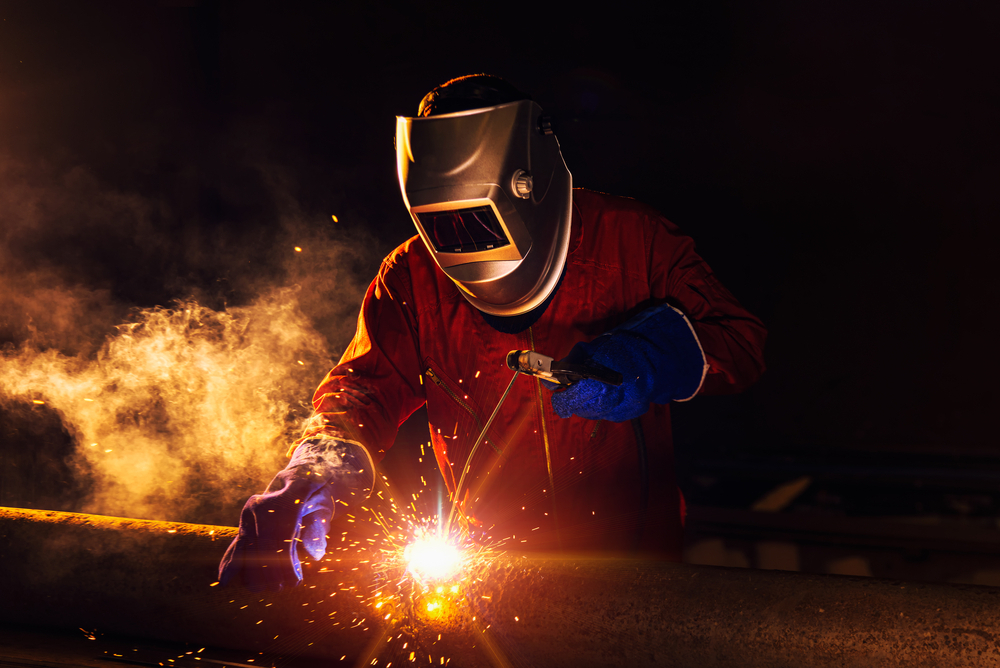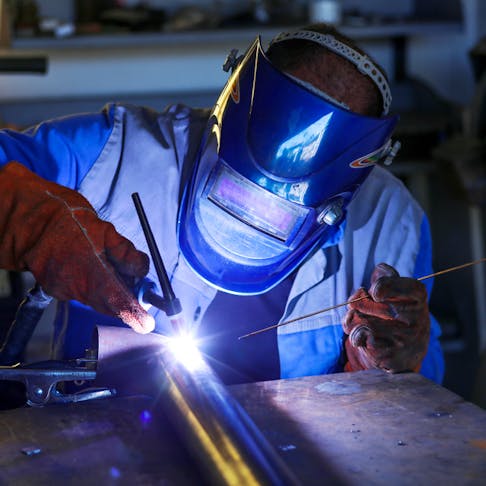Belgrade Fabrication’s go-to strategies for dealing with incomplete fusion
Usual Welding Fixing Issues and How to Address Them Effectively
Welding repairs usually experience an array of problems that can threaten the honesty of the final item. Typical issues include insufficient penetration, porosity, and misalignment, among others. Each flaw provides unique challenges that need specific methods for resolution. Understanding these issues is necessary for welders intending to enhance their end results and abilities. This conversation will certainly check out these typical welding repair work concerns and efficient techniques to address them.
Insufficient Penetration
Insufficient penetration takes place when the weld steel fails to totally fuse with the base product, leading to weak joints and prospective architectural failures. This concern often stems from not enough heat input, incorrect electrode angle, or inappropriate welding rate. Welders might encounter insufficient penetration as a result of a miscalculation of the needed criteria for a details material density or kind. In addition, contamination on the base product's surface area can hinder reliable bonding, aggravating the problem. To attend to inadequate infiltration, welders ought to assure appropriate setups on their tools and keep a clean job surface. Normal examination of welds is suggested to identify any type of shortages early, enabling prompt adjustments and the avoidance of jeopardized architectural honesty in bonded settings up.
Porosity
Porosity is a typical problem in bonded joints that materializes as tiny gas bubbles trapped within the weld steel. This problem can endanger the stability of the weld, resulting in decreased toughness and potential failure under stress and anxiety. Belgrade Welding. Porosity typically occurs from contamination, wetness, or inappropriate welding strategies, which enable gases to run away right into the liquified weld pool. To resolve porosity, welders ought to ensure appropriate surface preparation, preserve a tidy working atmosphere, and make use of ideal welding parameters. Furthermore, picking the right filler material and protecting gas can alleviate gas entrapment. Normal examination and testing of welds can aid recognize porosity early, guaranteeing prompt restorative activities are taken, therefore maintaining the quality and integrity of the bonded structure
Misalignment
Imbalance in welding can develop from numerous factors, including improper configuration and thermal growth. Comprehending the source is necessary for efficient resolution. A number of correction techniques are offered to realign elements and guarantee architectural honesty.
Root causes of Misalignment
Welding misalignment frequently stems from a selection of underlying concerns that can compromise structural honesty. One primary reason is incorrect fit-up of elements before welding, which can result in gaps and irregular surface areas. Variations in thermal growth throughout the welding process can additionally cause distortion, specifically if the products being signed up with have different coefficients of development. Furthermore, inadequate clamping and fixturing may fail to hold components firmly in area, resulting in activity throughout welding. Inadequately kept devices, consisting of welding machines and devices, may introduce disparities in the weld bead, further contributing to imbalance. Lastly, driver error, coming from insufficient training or experience, can additionally play a considerable role in producing misaligned welds.
Improvement Methods Offered
Addressing misalignment successfully calls for a mix of corrective techniques customized to the certain concerns available. One common method is using jigs or components to hold parts in the proper position during welding, making sure consistent positioning. Furthermore, preheating the materials can assist decrease distortion and boost fit-up. For considerable misalignment, mechanical realignment methods, such as utilizing hydraulic jacks or clamps, can be utilized to remedy the placement before welding. Post-weld warmth treatment might additionally be required to alleviate stresses created by misalignment. Cautious assessment and adjustment throughout the arrangement stage can prevent misalignment concerns from coming to be significant troubles, promoting a smoother welding procedure and improving overall architectural honesty.
Distortion
Distortion is an usual obstacle in welding that can occur from different aspects, including irregular heating and air conditioning. Recognizing the sources of distortion is important for executing reliable prevention strategies. Resolving this issue not only enhances structural integrity yet likewise boosts the total top quality of the weld.
Root causes of Distortion
When based on the intense heat of welding, products typically undertake adjustments that can cause distortion. This sensation mainly occurs from thermal expansion and tightening during the welding process. As the weld location warms up, the material increases; upon cooling, it acquires, which can develop internal stress and anxieties. Additionally, uneven home heating throughout a work surface can aggravate these tensions, leading to bending or bending. The kind of material additionally plays a substantial function; steels with varying thermal conductivity and coefficients of expansion may respond in different ways, leading to unforeseeable distortions. In addition, inadequate joint style and inadequate fixturing can add to misalignment during welding, increasing the probability of distortion. Comprehending these reasons is vital for reliable welding repair and prevention methods.
Prevention Techniques
Reliable avoidance methods for distortion throughout check this site out welding concentrate on regulating warmth input and guaranteeing correct joint design. Maintaining a consistent warm input aids to decrease thermal development and contraction, which can cause distortion. Using strategies such as pre-heating the workpiece can additionally lower the temperature level gradient, promoting consistent home heating. Additionally, choosing suitable joint styles, such as T-joints or lap joints, can improve security and reduce stress concentrations. Implementing correct fixturing to protect the work surfaces in position better help in maintaining placement throughout the welding procedure. Staggered welding sequences can distribute warm much more equally, preventing localized distortion. By applying these techniques, welders can substantially reduce the chance of distortion and boost the general quality of their welds.
Splitting
Breaking is an usual problem come across in welding repair services, usually arising from various elements such as improper cooling rates, product selection, or poor joint prep work. The event of fractures can substantially compromise the integrity of the weld, leading to prospective failures during operation. To address this problem, welders must initially analyze the source, making certain that materials are compatible and appropriately picked for the particular application. Additionally, controlling the cooling price during the welding procedure is important; quick cooling can generate anxiety and lead to fracturing. Proper joint design and prep work likewise add to decreasing the threat. Implementing these methods can enhance weld try this site quality and durability, eventually minimizing the chance of breaking in ended up weldments.

Incomplete Fusion
A significant issue in welding fixings is incomplete combination, which occurs when the weld steel does not properly bond with the base material or previous weld passes - Fabrication. This issue can lead to weak points in the joint, possibly endangering the honesty of the bonded framework. Aspects adding to incomplete fusion consist of insufficient warm input, incorrect welding technique, and contamination of the surface areas being signed up with. To address this issue properly, welders need to ensure appropriate pre-weld cleaning and surface preparation, in addition to change their welding parameters to attain appropriate penetration and blend. Routine assessment during the welding procedure can likewise aid recognize insufficient blend early, permitting prompt rehabilitative steps to enhance the total quality of the weld
Overheating
While welding fixings can improve structural integrity, overheating offers a substantial obstacle that can bring about material degradation. Extreme warmth during welding can modify the mechanical residential or commercial properties of steels, resulting in minimized toughness, enhanced brittleness, and warping. This phenomenon is particularly essential in high-stress applications where structural reliability is critical. Determining getting too hot can include aesthetic evaluations for discoloration or distortion, as well as keeping track of temperature throughout the welding procedure. To alleviate the threats related to getting too hot, welders should utilize proper methods, such as regulating heat input, changing travel rate, and using appropriate filler products. In addition, implementing pre- and post-weld heat treatments can aid restore material residential properties and boost the general quality of the repair, making sure long-term efficiency and safety and security.
Regularly Asked Questions
What Are the Common Indicators of a Welding Flaw?

Just How Can I Test My Welds for Top quality?
To test welds for high quality, one can utilize visual examinations, ultrasonic screening, and radiographic techniques. Each method ensures structural stability, recognizes flaws, and confirms adherence to defined requirements, eventually enhancing the dependability of the welded joints.
What Safety and security Safety Measures Should I Take While Welding?
When welding, one need to prioritize security by putting on appropriate personal protective devices, making certain correct air flow, securing combustible products away, maintaining a tidy work area, and being mindful of surroundings to stop mishaps and injuries.
Can I Fix a Weld Without Remodeling the Entire Joint?
Repairing a weld without remodeling the entire joint is possible, depending upon the damages (Montana Mobile Welding and Repair Fabrication). Methods such as grinding, including filler product, or using a welding procedure can successfully address details imperfections while protecting the surrounding structure
What Tools Are Crucial for Efficient Welding Services?
Necessary tools for effective welding repair services include a welding machine, cord brush, grinder, protective gear, clamps, and filler materials. Each tool plays an important role in making certain quality and safety and security throughout the repair work process. Porosity generally arises from contamination, wetness, or inappropriate welding methods, which enable gases to escape into the liquified weld pool. Improperly kept equipment, consisting of welding devices and devices, might present incongruities in the weld bead, additional adding to imbalance. When subjected to the intense warm of welding, products typically undergo modifications that can lead to distortion. Cracking is a typical problem experienced in welding repair services, frequently resulting from numerous variables such as improper air conditioning prices, material choice, or poor joint prep work. A substantial issue in welding repair work is insufficient fusion, which happens when the weld steel does not effectively bond with the base material or previous weld passes.